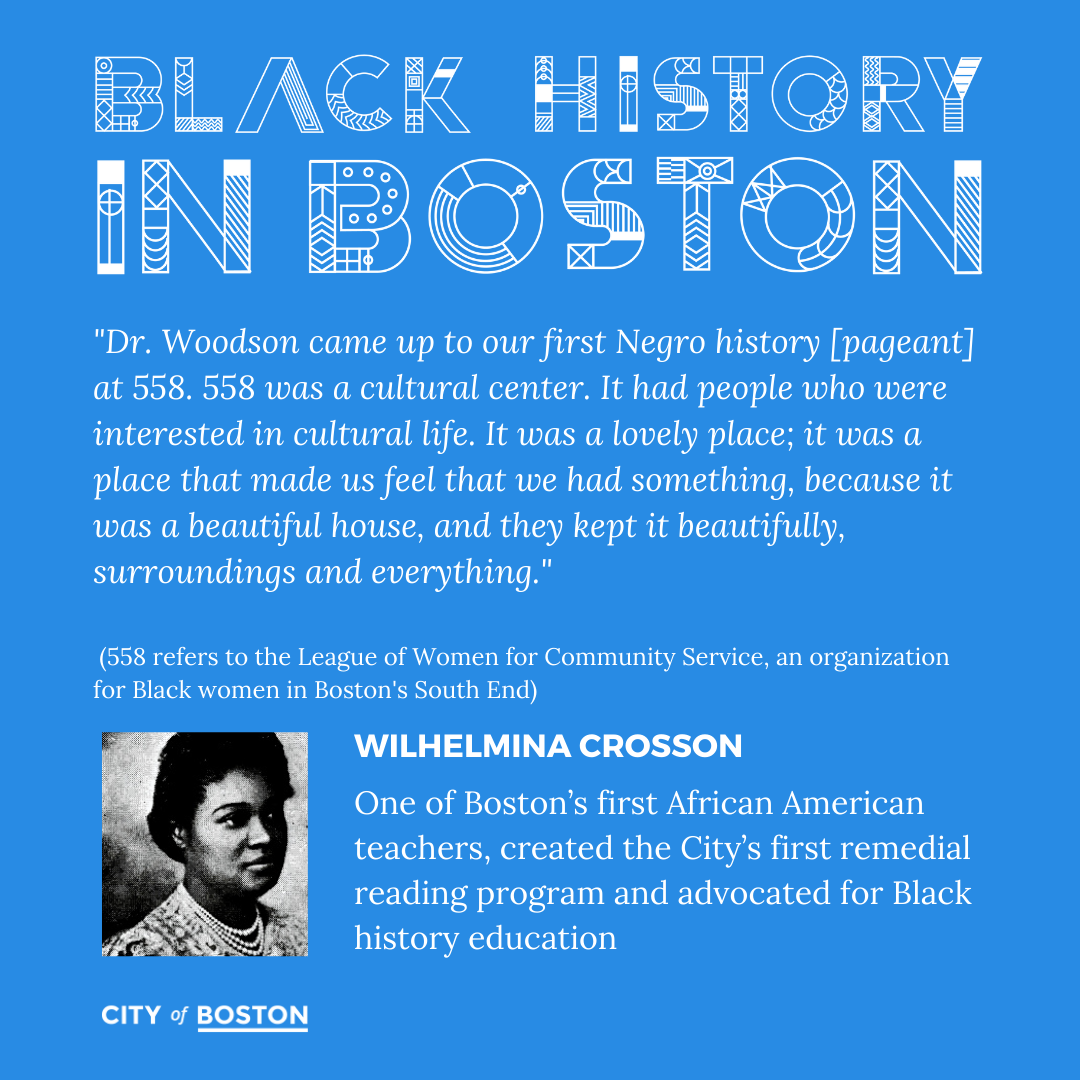In Their Own Words: Wilhelmena Crosson and James Henderson on Arts, Culture, and Education
In the 1970s, Wilhelmina Crosson, Boston teacher and education advocate, and artist and activist James Henderson told their stories to Boston 200 oral history interviewers
Both James and Wilhelmina remembered the importance of art and cultural activities in their communities. James recalled Boston's vibrant Black arts community with concerts, plays, and and other performances and gatherings. "We had debates, programs, and cultural exercises of all kinds. We had a very full, very happy life in a way. We didn't have much money, but we were all very busy doing some of the things we liked to do," James recalled.
James also remembered that while the Great Depression was a time of difficulty and hardship for Boston, federal work programs such as the WPA provided Black artists with the opportunity to be paid to produce the art that they valued. "There wasn't much for particularly the colored [artists] to do....The Depression was really the salvation of Black artists in a way because for the first time most of the us had the opportunity to do the things we wanted to do and get paid for them," James recounted.
Wilhelmina, who advocated for Black history education, discussed the first Black history pageant at "the 558," the League of Women for Community Service at 558 Massachusetts Avenue. Founded in 1920, the League provided a wide array of social services, but also served as a cultural center for Boston's Black community. "Dr. Woodson came up for our first Negro history [pageant] at 558," Wilhelmina remembered. "558 was a cultural center," she went on to explain. "It had people who were interested in cultural life. It was a lovely place; it was a place that made us feel we had something, because it was a beautiful house, and they kept it beautifully, surroundings and everything."
In addition to advocating for Black history education, Wilhelmina developed Boston Public Schools' remedial reading program. She emphasized the importance of providing literacy programs to Boston students early on in their education. "I was one of the first teachers who went into remedial reading and they sent me to different places in Boston to speak to the teachers to teach remedial reading," Wilhelmina explained. "I saw we had to prevent children from failing. It wasn't to go in and give them something to remedy it, but we had to go in and prevent it."
To read more stories from Wilhelmina Crosson and James Henderson, check out their oral histories here





